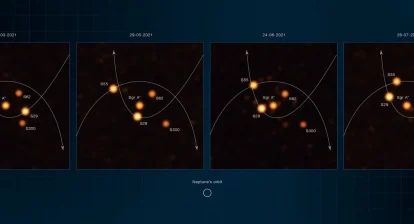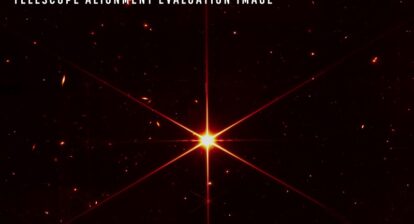The Hubble Space Telescope, a project of international cooperation between ESA and NASA, was launched on April 24, 1990. Since its launch it has orbited the Earth 181 000 times (over 7.2 billion km). Its observations of more than 1.5 million observations of around 48 000 celestial objects (over 169 terabytes of data) have led to many scientific breakthroughs. It is the only telescope designed to be maintained in space & initial defects in its lens were corrected in 1993 by astronauts.
In celebration of its 31st anniversary, astronomers aimed the celebrated observatory at one of the brightest stars seen in our galaxy, AG Carinae, surrounded by an expanding shell of gas and dust — a nebula (about 5-lights-years wide) shaped by the powerful winds of the star. Many thousand of years ago, a giant eruption created this stunning structure, when the AG Carinae’s outer layers were blown away into space, expelling material roughly 10 times the mass of our Sun. Check out the video to see the details of the star and to zoom into it.
This type of star is known as Luminous Blue Variable (LBV), which are among the most massive and brightest stars known. These ultra-bright stars live for only a few million years, compared to the roughly 10-billion-year lifetime of our own Sun, and such eruptions are typical in the life of these rare stars – a brief unstable phase in their short life. LBVs live a quiet life for years and then erupt, increasing their luminosity by several orders of magnitude. For example, AG Carinae is up to 70 times more massive than our Sun and shines with the light of one million suns. Such explosions can happen a few times during the life of LBVs and it only casts off material when it is in danger of self-destruction. The self destruction can occur due to the tussle between their massive sizes and super-hot temperatures: radiation pressure from within the star pushes outward and gravity pressing inward, making it expand and contract. Sometimes, the outward pressure wins and the star expands to such a huge size that it blows off its outer layers, but only when the star is about to come apart. Once the material is ejected the star contracts to its normal size and becomes stable again.
LBVs are rare, with only around 50 known among the galaxies in our local group of galaxies. According to ESA, “these stars spend tens of thousands of years in this phase, a blink of an eye in cosmic time. Some are expected to end their lives in titanic supernova blasts, which enrich the Universe with the heavier elements beyond iron”.
AG Carinae is few million years old, is 20 000 light-years away inside our Milky Way galaxy and its lifetime is expected to be between 5 million and 6 million years. Because it is an LBV, it remains unstable, although it has only experienced minor eruptions that have not been as powerful as the one that created the present nebula. The star’s powerful winds and radiation have shaped the nebula. The winds are a whopping 1 million kilometres per hour, which is about 10 times faster than the expanding nebula. As ESA website explains, “over a period of time the hot wind catches up with the cooler expelled material, ploughs into it, and pushes it farther away from the star. This “snowplough” effect has cleared a cavity around the star”.
In the image and video, the red material is hydrogen gas mixed with nitrogen gas. The blue structures are dust clumps illuminated by the star’s light. The diffuse red material at upper left is the region where the wind has broken through material and swept it into space.
The image was taken in visible and ultraviolet light. Hubble is ideally suited for observations in ultraviolet light because this wavelength range can only be viewed from space.
Credit: NASA/ESA/STSci







